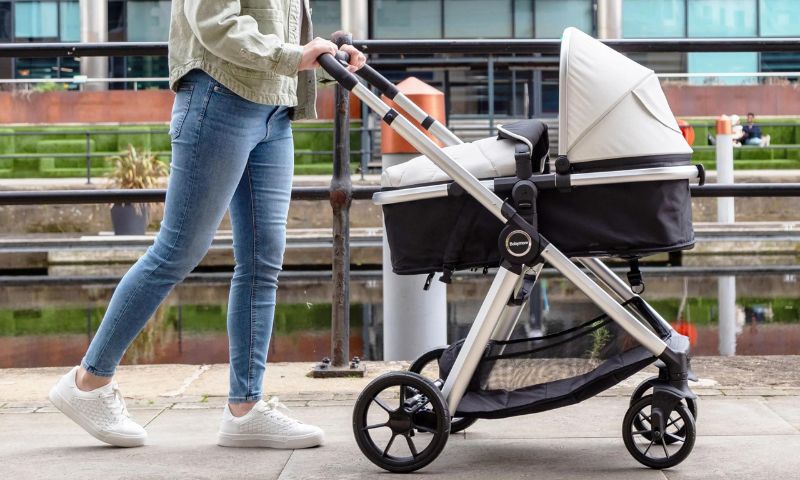
As parents, the question of when to transition our little ones from a pram to a pushchair often lingers in our minds. Every baby follows their unique growth path, but fret not – we’ve got some practical guidelines to help you make this pivotal decision. Join us in this blog as we break down the signs, differences between prams and pushchairs, and guide you on choosing the perfect set of wheels for your growing adventurer.
Many parents ponder this question, and the answer is straightforward – when they can sit up unaided. Typically around six months, but remember, there’s no exact age; the key is that your baby should have the core strength to sit comfortably.
Also, keep an eye on the age or weight limits of your pram. Prams, designed for newborns, might not be suitable beyond six months due to weight restrictions.
– Design:
Perfect for newborns, prams allow babies to lie flat on their backs, supporting lung and spine development.
– Position:
Typically rear-facing, creating a comforting bond between parent and baby.
– Design:
Geared towards older babies and toddlers, often forward-facing for a broader view of the world.
– Flexibility:
Modern pushchairs may offer adjustable seats for both forward- and rear-facing positions.
– Design:
Some prams convert into pushchairs, serving from birth to the time your baby starts sitting up. Great for longer outings and adaptable with carrycots.
– Consideration:
Compact and lightweight for easy storage or sturdier and heavier for durability.
– Usage:
Urban trips favour lightweight models, while rough terrains may call for a more robust frame.
Be mindful of upper age and weight limits for a prolonged investment or opt for smaller, budget-friendly models for short-term use.
– Consideration:
Ample storage options for those who embark on lengthy walks. Balances with weight and bulk, so decide based on your preferences.
Large wheels for off-road adventures, small wheels for urban manoeuvrability, and specialised running pushchairs for jogging enthusiasts.
– Recommendation:
Newborns and infants under six months benefit from lying as flat as possible for their safety and well-being.
– Ideal Options:
Prams, buggies with fully fold-down seats, and travel systems with carrycot attachments are excellent choices.
– Reasoning:
Newborns lack the muscle strength to support their heads, and propping them up can lead to breathing difficulties and stress on their bodies.
– Benefits:
Lying flat on a firm surface not only aids proper breathing but also supports healthy hip and spine development.
These models include convertible carrycots, perfect for use from birth. Look for added accessories like nappy bags, rain covers, and mosquito nets.
These include higher end travel systems including separate carrycots as well as individual seats for pushchairs also. Babymore’s ‘Memore’ range consists of this 3-in-1 travel system and is extremely convenient for your children who are transitioning from a pram to a pushchair.
Explore models offering extra features, such as accessory bundles, enhancing your travel convenience.
Aside from developmental milestones, practical aspects come into play when deciding when to transition.
If your baby is approaching the weight or size limit of the pram, it might be time to consider a pushchair that accommodates their growth.
When your baby starts expressing eagerness to explore, reaching for things, or showing a keen interest in the outside world, a pushchair provides a more interactive experience.
Ease the transition by introducing the pushchair gradually. Start with short walks and gauge your baby’s comfort level.
Choose a pushchair with adjustable recline options and ample padding to ensure your baby’s comfort during longer outings.
– Recommendation:
Transition to a pushchair with an upright seat is advised once your baby can sit upright unaided, fully raising and controlling their head.
– Typical Age:
Around six months is a common milestone for this transition.
For those using travel systems, moving from a carrycot to a buggy seat follows the same principles. Ensure your baby can sit upright and control their head independently.
Move your baby to a pushchair when they can sit upright unaided and fully control their head, ensuring the stroller is suitable for their age.
Moving from a pram to a pushchair is a journey shaped by your baby’s unique development. As your little one reaches milestones such as sitting upright and mastering head control, you’ll receive important signals about their readiness. Trust your instincts, make safety a priority, and relish this thrilling phase as your baby embarks on a journey towards exploration and independence.








